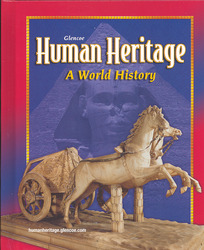
Human Heritage: A World HistoryChapter 30: The Age of DiscoveryThe Age of DiscoveryBy the 1300s, Italy controlled Europe's trade with India and the Far East. The Italians sold goods to other Europeans for a large profit. Among the goods most in demand were silk, spices, gold, and silver. Because of trade and the desire to spread Christianity, Europeans began to search for a direct sea route to India and the Far East. Chapter 30 focuses on this age of exploration and discovery by the countries of Europe. Section 1 explores why the Europeans searched for a direct sea route to India and the Far East. The section focuses on the achievements and voyages along the coasts of Africa and India of Portuguese explorers Prince Henry the Navigator, Bartolomeu Dias, and Vasco da Gama. Section 2 describes the voyages and discoveries of two navigators who sailed for Spain to the Americas—Christopher Columbus and Ferdinand Magellan. The section also focuses on the dispute about the division of new lands between Spain and Portugal and covers the Spanish conquistadors who explored an area from North America through Central America and the West Indies to South America in the early 1500s. Section 3 focuses on the English, French, and Dutch explorers who searched for a northwest passage to the Far East. The section highlights John Cabot, Giovanni da Verrazano, Jacques Cartier, Sir Martin Frobisher, and Henry Hudson. A chart lists the achievements of other European explorers from the late 1400s to the mid 1700s. |  |















